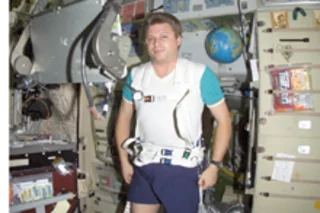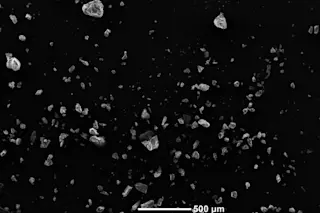Breaking free of the the Earth's gravity and floating in zero-G: It's certainly a thrill for those who get to experience it, either through traveling to space or simulating the journey. All good things, though, must come in moderation. Too much time free from the grip of gravity and we turn into weak-muscled wimps, which is a huge hurdle for hopes to travel to Mars or deep into space. Robert Fitts wanted to know just how quickly the lack of resistance on one's muscles makes them out-of-shape and atrophied. So his team tested nine astronauts before and then just after their six-months stays aboard the International Space Station. The study appears this week in the Journal of Physiology.
The losses in fibre mass, force and power translated into a decline of more than 40 percent in the capacity for physical work, Fitts reported. Ironically, beefing up before the trip had ...














